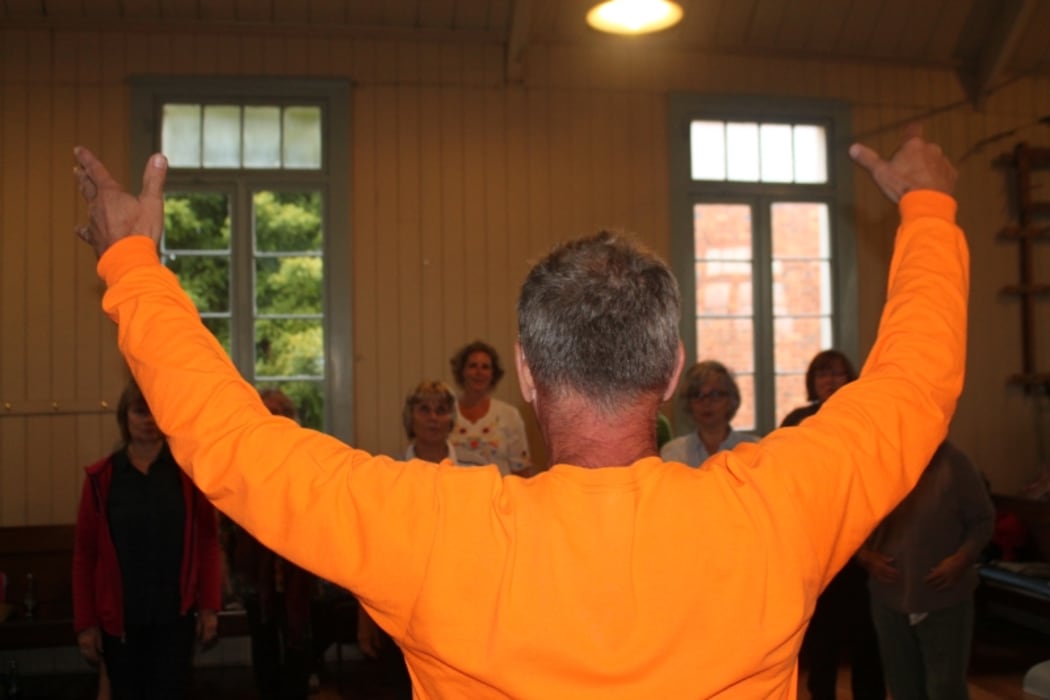
Bert van Dijk leads the choir. Photo: RNZ/Justin Gregory
Actor and choirmaster Bert van Dijk believes everyone can sing. He puts his money where his mouth is by conducting the Devonport World Song Choir, a mostly amateur community group. He teaches an uncommonly physical style of singing and achieves remarkable results. Quite a shift for man who spent his early years too scared to even open his mouth.
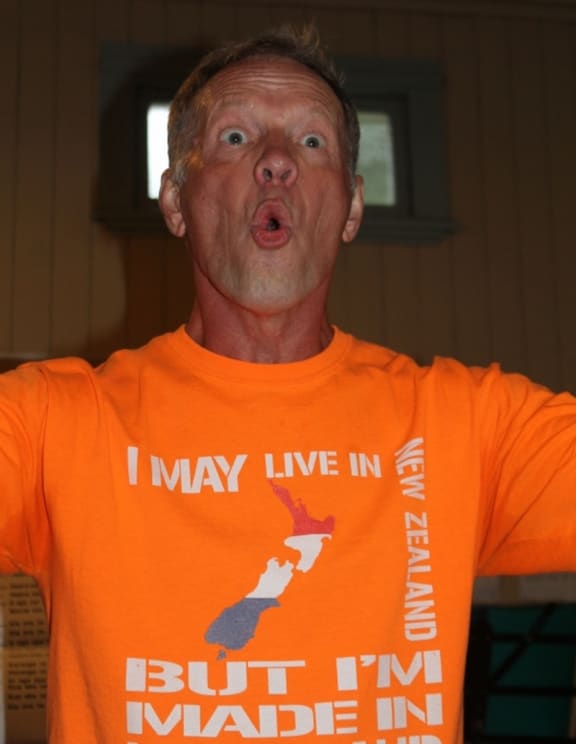
Choirmaster Bert van Dijk. Photo: RNZ/Justin Gregory
‘I went to drama school in the Netherlands’ explains van Dijk. ‘I was so shy and so timid about speaking and singing in front of other people that I actually became a dancer. But then I came across the Roy Hart Theatre.’
Roy Hart was an avant-garde actor and singer whose European-based theatre company pioneered extended vocal technique and championed sound over language in performance.
‘(They) welcome any kind of sound that you make, be it beautiful or ugly. They believe that the way you use your voice is the way you live your life. So if you only use one or one and a half octaves, you only live a one and half octave life. And so that’s when I learnt to squeak and grunt and make big sounds and through them I liberated my voice.’
Hart boasted an eight octave vocal range and believes that with training, any human being can achieve the same result. So how wide is Bert’s range?
‘Probably three and a half, although when I’m really angry I may get up to five!’
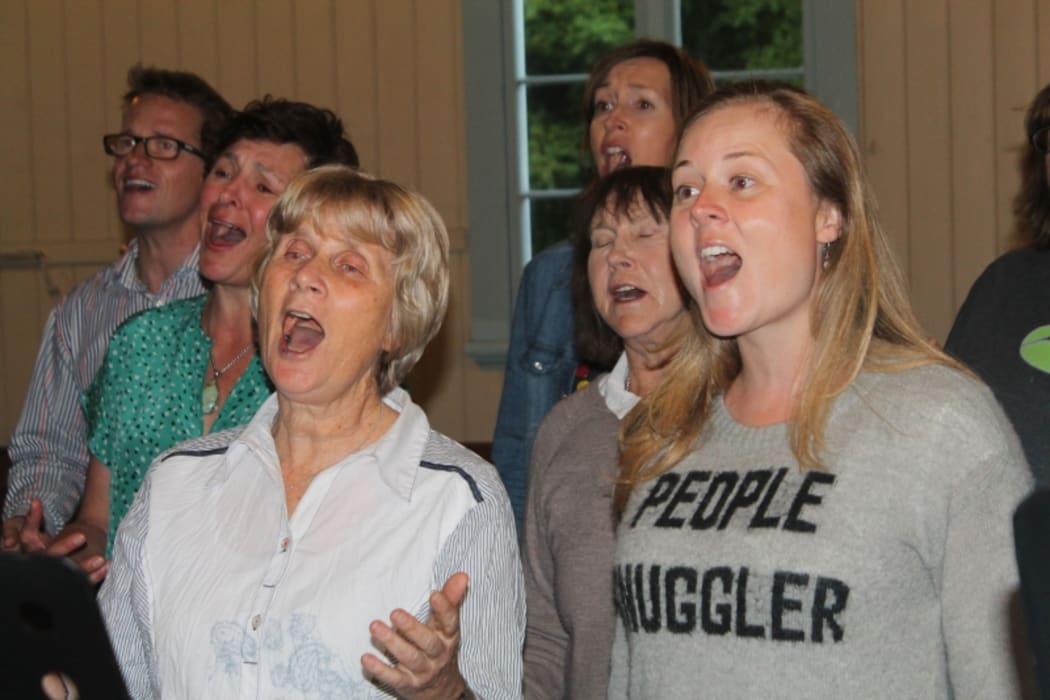
The Devonport World Song Choir in full cry. Photo: RNZ/Justin Gregory
But he still felt very shy singing in front of people.
The only way to overcome that was to teach songs.
The Devonport World Song Choir formed about three years ago when van Dijk moved to Auckland and made contact with a former student. The group grew slowly but now boasts more than twenty members who rehearse once a week and perform several times a year. Some are trained actors and singers but most are simply enthusiastic amateurs and they range in ages and abilities as well as nationalities, backgrounds and occupations.
Each rehearsal begins with a mihi led by the group’s other choir master, Rawiri Hindle. Then Bert takes over to warm up the singers. An important exercise involves them shaking their bodies while vocalising with a relaxed open, mouth.
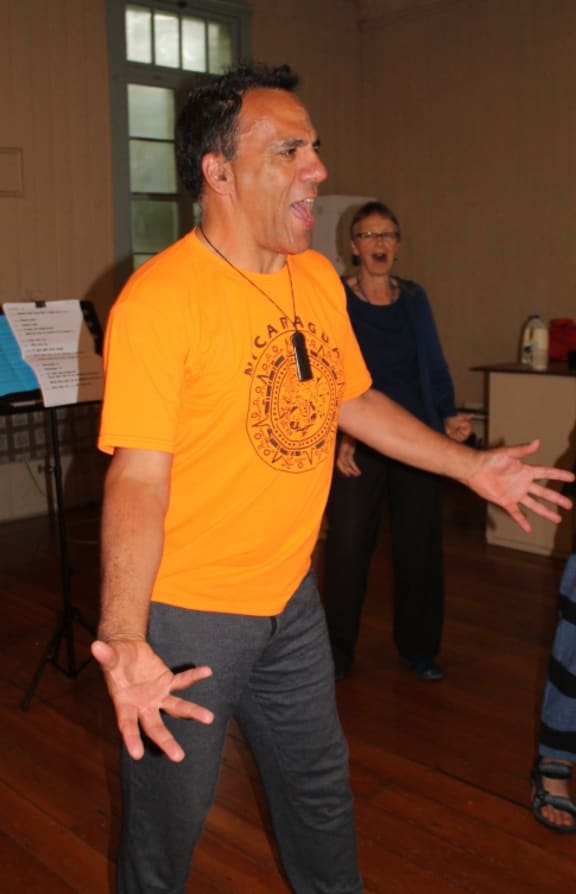
Choirmaster Rawiri Hindle. Photo: RNZ/Justin Gregory
‘Through the shaking you actually free up the resonators and you energise the body whilst maintaining a level of relaxation. I think often when there is a vocal problem its either just not enough energy or there’s not enough relaxation; they are too tense and the voice tightens up.’
The first objective is simply to allow any sound to come out of the mouth. Singers trill, burble, squeak, vibrate their lips and moan. After that comes making a sound at the correct pitch and much later, singing the right words.
There are no song sheets. Bert teaches the songs line by line, using the call and response method. In the hour that I attended a rehearsal, I heard music sung in seven different languages. Their full repertoire consists of more than 150.
‘Argentinian, African - from all over the continent – French, Russian, Georgian, Swedish, Norwegian, Japanese, Maori, Tokelauan, Samoan…all the songs I’ve learnt from a teacher who taught me.’
Van Dijk says New Zealanders struggle with expressing themselves in a foreign language and are very concerned with getting the words right.
‘And I always say, rather than trying to get it right, make it up! Make a sound and eventually the sound will get closer and closer to what it’s meant to be.’
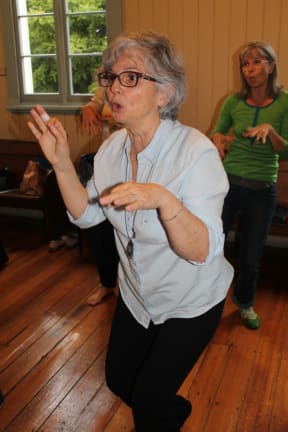
Choir members Claudia and Isabelle. Photo: RNZ/Justin Gregory
Amateur or community choirs are becoming more popular. Van Dijk believes that it about the desire for expression but also in part a case of safety in numbers; while a person might want to sing, often that desire is swamped by worry about sounding bad. This fear of exposure is lessened by all the bodies (and voices) around you.
‘Also I think the sense of community. Maybe in the past (it could be found) in the church; people would sing and have a sense of connection and community through religion. But less and less people now feel compelled to go to church; so they’re looking for other ways of finding (that).
Matt, as he wants to be known, has been a member of the World Song Choir for nearly a year and says it has gotten him through some tough times.
‘I can’t tell you how important it’s been. We all want to be around other people so this community-led thing is really a chance for us to reconnect with things that are tangible.’
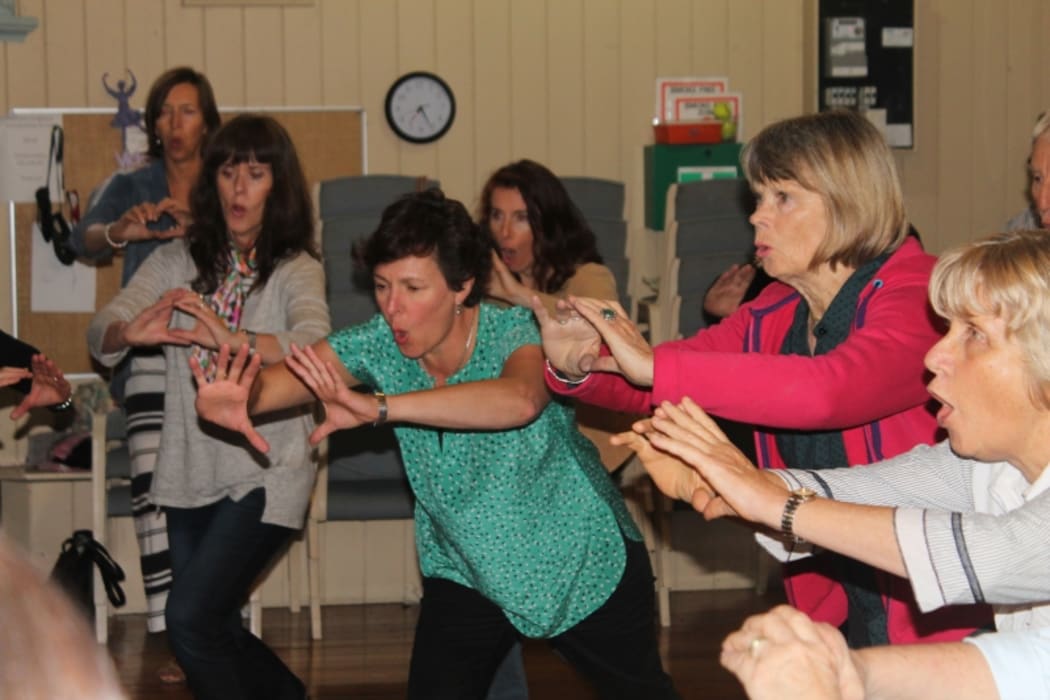
The choir members warm up for singing by vocalising, shaking and moving. Photo: RNZ/Justin Gregory
Choir member Claudia is originally from Brazil and agrees that the choir is a good way to connect but she is in it for the fun.
‘Sometimes we feel like children. We move our bodies and we do many faces to sing and open our mouths. Yes, yes!’
Her friend Isabelle puts it more simply.
‘I can sing! The way he works, I think everyone can sing.”
The choir’s last show for the year is imminent and like every conductor, Bert wants the music to be right, with every singer on point but also relaxed and happy. He is very direct when conducting the choir but obviously delighted when they succeed.
As their final song climbs to reach a high, concluding note, he is up there with them, glowing with the effort. Afterwards, as choir members dissolve into laughter and congratulate each other, he beams at them.
‘Almost, almost!’

